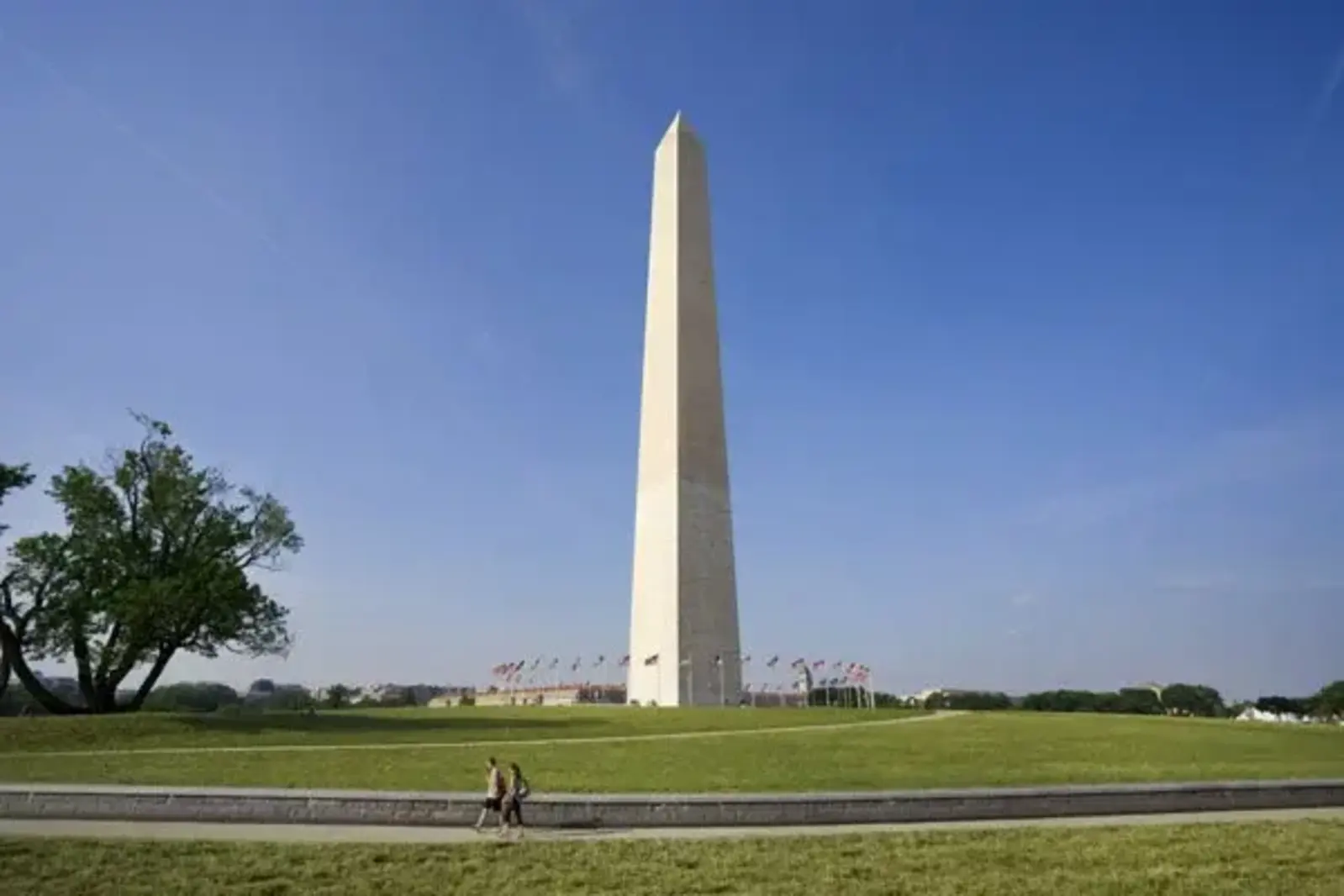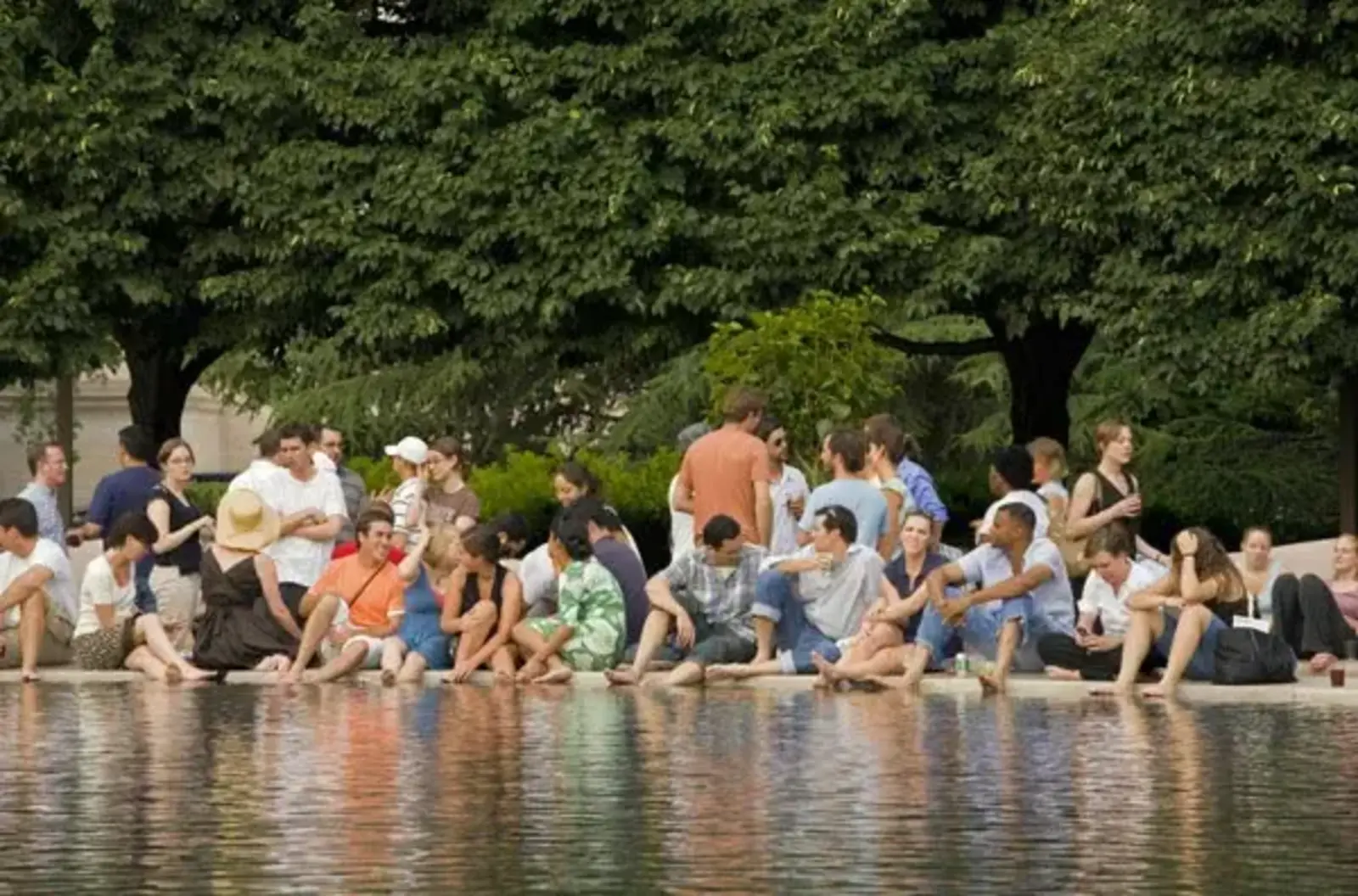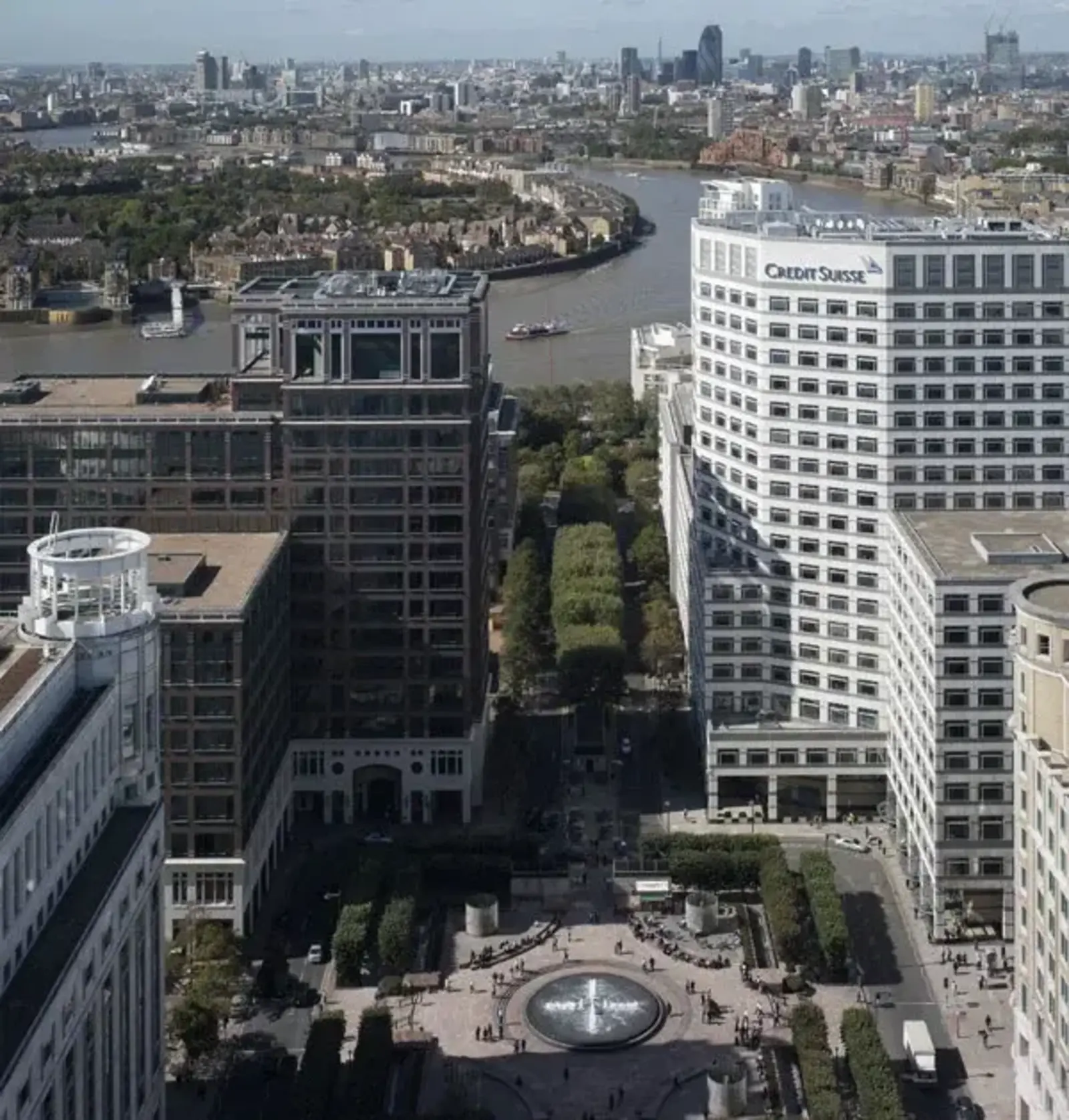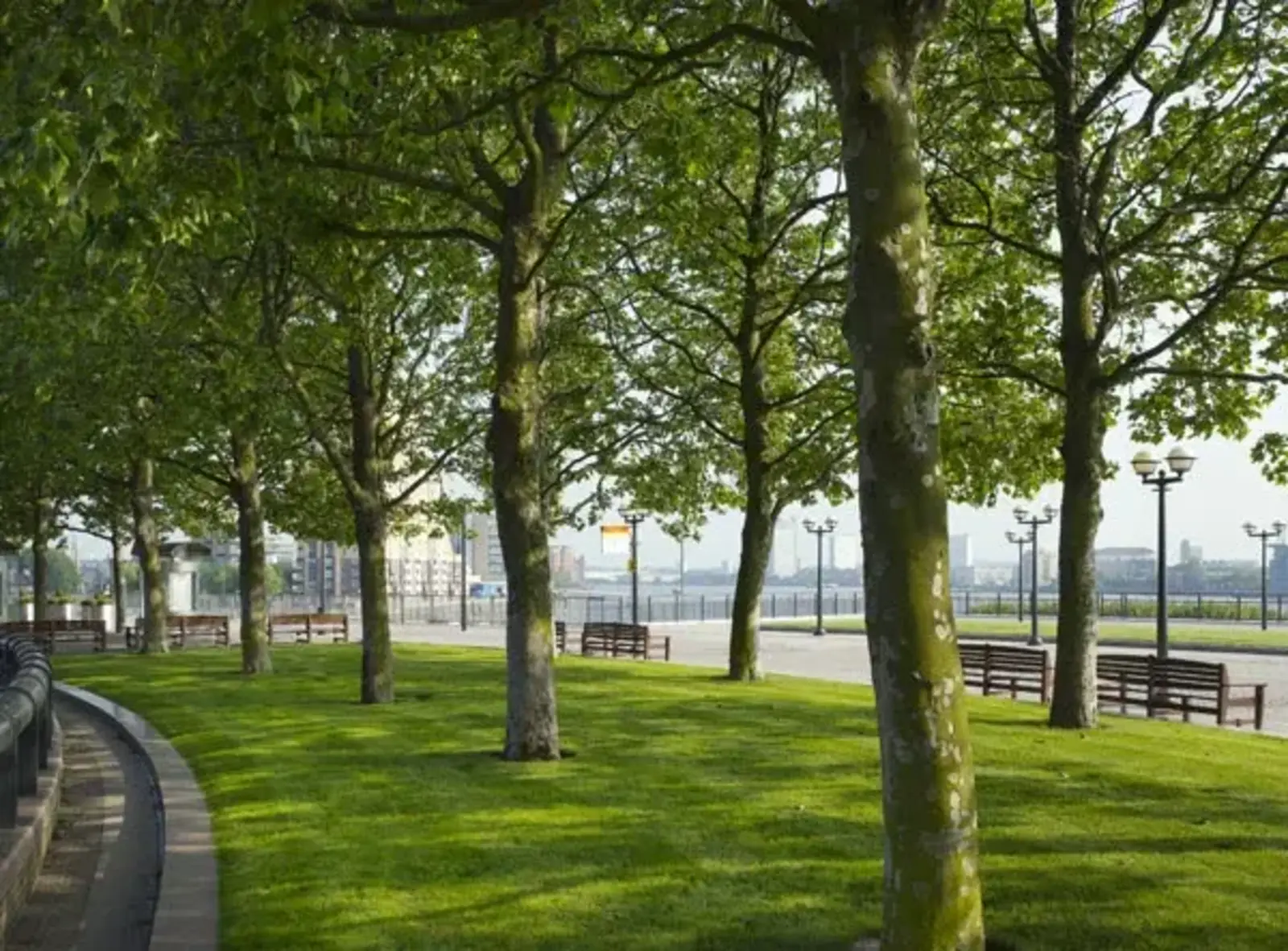Laurie Olin, FASLA
on OLIN’s Award-winning Landscape Architecture
Many of your park projects, including Bryant Park and Hermann Park, have won awards from ASLA and other organizations. Do these projects all share a common philosophy?
What you're asking is what do many of these things have in common in terms of people, and their needs, and uses. Our office really believes that everything we do is really about people. But, we also believe that everything we do for people should be both environmentally supportive to them and the environment, and also be wonderful places to be either together or alone. We try to address the dilemmas of the individual and the group. We try to be open and accessible. We try to make things that are enduring and won't fall apart, and have lasting qualities. We also know that no matter what we do, everything that matters really does require maintenance. You have to make things people care enough about to want to maintain.
What do they have in common? One of the things they have in common is not just the minimum requirements of being open and accessible, which is obvious, but that they are robust, and have a level of stimulus in the environment that people will relate to. There are a lot of things we know about human beings and their behavior through history – some of it relates to our being primates and animals, and some of it relates to our being a society and a culture. Then there are the issues that have to do with differences in age -- what young kids need is different from what the elderly need. We try to think about the different abilities of people that use these spaces and what we're interested in, as well as making spaces that people are comfortable being with each other in. Sometimes that means no grass and sometimes that means lots of grass; sometimes it means water, sometimes it means none. We know that throughout history people like to sit in the sun with their back to a wall under a tree looking out and watching other people. People love to eat together. What our parks all have in common is an enthusiasm for social gatherings and a care for the natural systems that we relate to.
You've done a lot of work in Washington D.C., including the landscape at the base of the Washington Monument and the National Gallery of Art Sculpture Garden. How do you define the landscape of D.C.? What attracts you, personally, to the city?
My feelings about Washington began mixed, if not negative, because the first time I was in Washington D.C. was the March on the Pentagon in 1967. There were helicopters and tear gas and a lot of other things that weren't very pleasant. Later on, with Joseph Passonneau, I worked on a transportation and city design study that looked at how to try to restore the L’Enfant plan and overcome what automobiles had done to it. I became very interested in the early planning concepts that Jefferson and his architects employed when trying to build the Capitol. They only had 10 years to get it built, and they had to build a whole city. It was pretty tough.
Some of the ideas they had were quite powerful, but they were derived from urban planning ideas from Europe and the Enlightenment. One of the problems was overlaying Baroque systems over more pedestrian grid networks, and using certain land speculation plans that came out of Holland and England. One of the interesting things in the plan was they ended up with a city with more land in open space and rights of way than any other city, maybe, in the world, certainly in America, and a lot of complicated intersections. I was interested in the urban plan, I became interested in how it ended up wanting to be like the great European cities, especially Paris, but ended up not being like them at all, and then the problems it had. I became interested in all the designers who'd worked here, and most of our great designers, certainly some of the great landscape architects, Downing, Olmsted, Peets, Eliot, Kiley, all worked here.
One of the things that intrigued me was how these pieces went together to make what is truly a monumental city. It is different from the other cities in America. It feels important in the civic realm, or it did before 9/11, certainly. Yet there was a lot of mediocre architecture, in fact, some very bad architecture. But, it still added up to a ceremonial and grand city. I was interested in the work that a couple of landscape architects had done in some of the parks. Then later, Charles Eliot, when he was working on the park system under FDR, and with others did things like Rock Creek Park. It was really pretty wonderful stuff that happened, the Parkway systems and all. When we came to work in Washington, we first did a little project on Pennsylvania Avenue that closed a street and pedestrianized it. We simplified an intersection and moved the Monument for the Grand Army of the Republic and the Temperance Fountain. We rearranged them because it was just such a mess. I was working within the larger frame of the Pennsylvania Avenue development plan that Nat Owings and David Childs and others had done years before. I was trying to figure out what were the ideas about Washington that people had in terms of its public stance, its civic situation, and that really has driven most of our work here.
When we did the National Gallery Sculpture Garden, I was really thinking that it was a building site that didn't get a building. When Jefferson first sent his sketches to L’Enfant and proposed a series of buildings along this great ceremonial open space, that we call the Mall today, he didn't know what they'd be. He thought they'd be embassies or something. They'd be special buildings, not just normal residential or bureaucratic buildings. They have become special. We're still in-filling. We're about to do the African American Museum on another chunk. When we were asked to do that garden it seemed a wonderful opportunity to fill in a missing tooth. It’s not a building for a change – it’s a public garden of sorts, with art, sort of an outdoor gallery.
It wanted to be dense and filigree and full as opposed to the big, empty, open, shaft space of the Mall. It also wanted not to be orthogonal. Where the Mall is long and straight, it wanted to be curved, soft, and shady. It wanted to be a contrast gainer, as our psychiatrist or psychologist friends would say. You want to be able to step out of one kind of space into another kind of a space, and have it be rich in ways the other one wasn't, not because the other one's not good. It’s a place to sit. There aren't really a lot of places to sit out on the Mall itself. That's the kind of space that says to your eye, "Keep moving." To your legs, "Keep moving." Whereas the garden for the National Gallery is a place to come into for respite, to change the focal length for your eyes to see the art, to enjoy water.
We were also able to do things in The Sculpture Garden one can't usually do in a public landscape these days. The dilemmas we have had- the special dilemmas we have about social situations that have produced so much homelessness, people on the street who have no place to live or choose to live in the street- have had a terrible effect on public parks, and have led to stripping out shrubs and things that people might be behind or under. Then, also, there’s the fear of crime. The whole under-story, and shrub layer is missing from our public parks today. It's all been ripped out, taken away. Here was a chance to actually put things we associate with gardens and parks back into a public landscape in a way that's very unusual today. Because it was to be an enclosed enclave that could be secured by the National Gallery with supervision and because they were going to put art worth millions in it, it was to be closed at night. There are attendants and people walking around to make sure that everything's all right. We were allowed to actually make a richer environment, more like one associates with estates and fine places like had been in the White House grounds and other parts of the Capitol grounds at one time.
When working on the Sculpture Garden, I was thinking about Downing and his plan for the Mall that partly got built -- parts around the Oval near the White House. I was thinking about the plant palette he wanted to use. He wanted it to be a great arboretum of American plants and trees. That led to those thoughts. That great open shaft of space, the Mall, wanted to be clear, wanted to be simple, wanted to be bold, wanted to be open. The Sculpture Garden didn't want to be like the Mall as it is today. The thing about Washington is paying attention to where you are and what portions of the city you're dealing with and their relationship to, not only the city, but to its visitors and to the nation and to our imagination about the city.
Early on some architecture critics in New York City thought it would be difficult to revitalize the Columbus Circle area. Your work on the traffic circle has helped make that part of Manhattan a destination. What was your vision for Columbus Circle? Was it realized?
Well, the answer is I always thought it could be made to be a pretty cool place. But it was such a mess. When I lived in New York in the '60s it was a real mess. Let's see, how many streets -- Broadway comes through, Eighth Avenue comes through, 59th dead-ends into it. So it's one, two, three, four, it's, well, like a lot of Washington intersections. It's a five-way intersection, but also a circle with a monument in the middle. Some of them are one-way, some of them are two-way, Broadway's one-way southbound, Eighth is west, Central Park West is northbound one-way, except it's two-way just north of that. Fifty-ninth is two-way, and then underneath there's two subway lines. There's the Seventh Avenue Broadway line and then there's the A Train, with the C and the E running north and south on Eighth Avenue. They're stacked underneath the circle so between two subways and five streets and it was a mess. There alsowas a kind of diagonal parking lot in it full of motorcycles and trucks at one point. It was a complete shambles. You couldn't cross it, you couldn't get around it. It was horrible.
What happened was back in the late '80s Bob Hanna and I were asked by The Central Park Conservancy to look at the entry into the park there by the Memorial to the Spanish American War Memorial, the Maine monument (the Battleship Maine Memorial) which had been transmogrified during the Moses era. In the ‘30s he changed the entrances from the Olmsted Plan and it had gotten slightly messed up. We looked at it and were trying to figure out how to help. We looked at the circle and said, "This should be a circle." Having both lived in Europe, we said, "Why don't we make it a grand circle and have trees and all that." We started out clear back in the '80s, saying this should be more attractive, and clear, and the traffic should use it as a roundabout, the way it was originally conceived. The Conservancy was interested in our ideas but they didn't really want to deal with the Center. They just wanted to fix up the side. Then, at a certain point, we got in a fight with the Park Commissioner, Henry Stern because we wanted to cut and trim the overgrown trees, so we were dismissed.
Years later, Phillip Habib, the transportation and traffic engineer, who's a brilliant engineer, and had worked for the city, was asked, based on some of what we'd done and what other people had done, to see if he could untangle the traffic. And so he did. He developed an idea of how to reorganize the traffic so it'd go around, how to time it so it would make sense, and where the crossings might be. Phillip Habib was the genius who focused on how you might actually make the traffic work. Once he did that, another organization, The Municipal Art Society, an advocacy group in New York, sponsored an ideas competition in which we participated along with a bunch of other people. In the course of that, I saw that the fountain was part of the problem. It was at the base of the monument. The monument was standing in this little puddle, which had been given to the city by a nice family. But it was not a good idea and it didn't look good. It was sort of stupid. And it kept you away from the inscriptions and the steps and all that sort of stuff. So, during the ideas competition my partner Cindy Sanders, and I cooked up ideas about how we might do skylights down into the subway so you could look up from below and you'd see down from above and you'd see all the layers. And then we'd flip it inside out and we'd do this thing where the fountains are on the outside and people could be in the middle. The water would help with the traffic noise and all that. We figured out how to take Philip Habib's plan and use his pedestrian accesses to cross it and go into it. But that was just an idea at the time. Nothing really came of it.
In the last days of Rudy Giuliani's administration Joe Rose, the head of city planning, called me and asked if I could come up and talk to him about redesigning Columbus Circle to get it done by the time the new big buildings that David Childs was doing were to open on Columbus Circle. They were also doing some work on the subway at the time and some utilities work. So it seemed timely. I had this simple idea. It is so elementary: that if you could just do this slight berm all the way around the outside that would be up above the wheels of the car. People standing could look over it. When you sat down you would be enclosed. It was just like those office partitions that are in all those open offices. You sit down and you're in your cubicle. You stand up and you can see all around. I thought, "Well, if we just had a berm that size that would cut out a lot of the auto noise, and help isolate it." And then if you just flip the water -- it seemed so clear, Columbus was a mariner, right? It should be about water. You should have more water. The thing was he didn't discover a continent -- he discovered islands. This should be an island. You should walk out to an island. This monument to Columbus should be on an island in the water, very simple.
From there, we just spent a lot of time trying to make sure that everything reinforced those few simple ideas. You'd have trees, which should eventually grow and actually make a bigger, taller volume of space then the berms themselves. There'd be this cylinder you'll be in with views of the monument, and these axial views on the streets to the monument, which is actually a very handsome and wonderful beaux arts monument in this neo-classical way with the column with the beaks of ships, these Roman ship prows with a statue of Christopher Columbus on the top. The benches, and the pavement, and the walls are all kind of simple. The vision was: "I'll bet if you could get out there safely and isolate it from the traffic, it'd be a cool place to be." And it turns out it is. You can go there in the middle of the night now and there's young people meeting each other and just hanging out. A place that never existed before is full of people all the time.
Canary Wharf in London has changed from a derelict brownfield into one of the financial centers of Europe with the help of your landscape architecture. How does landscape relate to the financial industry? Do you see any connection between the typical environment or landscape of the financial community and the current problems in this industry?
One could make a lot of flip remarks about green and the relationship to money and wealthy people. People in finance have always been able to afford good environments and tend to spoil themselves with nice places. Some of our clients have been involved in the world of commerce and business and done well. But I would say that in most of the great cities, London, Frankfurt, Paris, Berlin, and New York especially, you will find an aggregation of people in finance and commerce. They tend to want to be near each other for community and communication and for meeting and running into each other and having meals. It's a very normal social behavior. It's just like jewelry row, where all the jewelers are together. It's common to have bankers and financiers and traders and brokers all being close together. They tend to be in urban, dense places.
One of the problems that occurred in the late '80s, early '90s was as trading expanded worldwide into a 24-hour business- all of this computer trading- the trading floors got bigger and bigger and brokerage houses ended up needing more and more space and bigger and bigger floorplates. They needed buildings that didn't fit very well in traditional small, especially European, neighborhoods and communities.
Canary Wharf was one of those radical ideas on the part of an American businessman, Ware Travelstead from First Boston, who had this idea that he needed to find a place where he could go build a bunch of bigger buildings with bigger floor plates that wouldn't wreck the center of London. He couldn't figure out how to build them in London and he knew there was going to be a need for them. Where to put them? How would you aggregate them in such a way that they would actually make a community and not be a horrible bunch, just a collection of big buildings? And so the architects that he called upon to help him, Skidmore Owings and Merrill (SOM) from Chicago with Bruce Graham in charge, and I.M. Pei & Partners with Harry Cobb in charge from New York. Both said, "Let's get Laurie to come help us," and so my office worked with them on the big plan.
What we really were trying to do was make another piece of London that had public spaces and streets and squares that were modeled upon the best traditions of urbanism in London, that worked at another scale with new buildings in a site that was a brown field site. It's interesting that the landscape really helps hold it together and gives it a sense of place. We also tried to have it still be London and be social. If you go to Wall Street, they don't really have a lot of social space. They have a lot of indoor space, and they have little streets and alleys. The brokers like being in tight little bars and in lunch rooms. They tend not to go out of the buildings a lot. But, when we did Battery Park City and all that open space along the Hudson, holy smokes, that really helped that whole lower Manhattan area, because there is a need, a social need, when you get that much density.
If you go to Frankfurt, which is the financial center of Germany, they have some urban squares and now a lot of modern, even tall buildings. They have great riverfront and everything, but they have a very urban tradition of tight urban squares and spaces. If there is a tradition, any relationship between landscape and finance, it's usually the country as a retreat on one hand, and the dense, urban jungle and the streets and alleys and little squares of the city on the other. Canary Wharf I suppose is an anomaly, but it also might say something about what might be better for people to have in the long run. It also has turned out to be very successful. The English press hated us. They thought we were going to wreck the place, these terrible Americans. It has been enormously successful although some of the businesses going on in it at this moment are not.
How do you define sustainable landscape architecture? How do you think landscape architects can gain recognition for their work, which inherently deals in sustainability? What core ideas do you think will connect with the general public?
We've talked about that a lot in our office in the last few years. It seems kind of ironic because, as you say, landscape architects have been doing this as long as there have been landscape architects. Sustainability. We may be tired of the phrase, but it's what we are really, deep down inside, pretty much all about. We like to think that it's not just green roofs or nice building materials that endure and hold up. When we talk about sustainability, we talk about economics. We talk about the social realm. We talk about cultural support, use, utility. We talk about financial sustainability. We also talk about the environment. We talk about natural systems. We talk about materials. We talk about things like water endlessly; it's not just plants. It’s not green roofs, although we've done some of the grandest green roofs of any firm in the world.
We've been building landscape over structures since the '70s. On our very first job in 1976, we built one without even thinking about it. We didn't even know it was unusual. We did, instead of lawns for a corporation, meadows with wildflowers. We saved hedge rows. We were building ponds with habitat. We did a whole garden on top of a kitchen and did a garden outside with herbs and things for the kitchen. That was our first job, you know, back in the '70s. There was an awareness of cultural history. Use the landscape as an edible landscape. It's outside, it's attractive, you can use it, it relates to your life and what you're doing. It’s about protecting the roof so that it doesn't need solar weathering. It's attractive and it provides habitat and it's cooling. We've been doing that stuff all our lives.
How can landscape architects get other people to understand that's how we think? I think to do more work, show it, talk about it, and invite people to see it. A lot has happened in the last ten years. People now have a sense of it that they didn't before. They know that we do that. We need to be at the table when people start planning. We need to be involved when people are doing site selection. We should be helping people say, "No, you shouldn't build there. This would be a better site." We have to get involved in a lot of the more troublesome planning decisions. We need to be involved in politics. Some of us have been political off and on, especially when we were young, but we got tired doing it. It's wearing. Each generation needs its ten years in the barrel fighting the politics when they have so much energy and altruism. People don't realize that landscape architecture is political. In a democracy it probably should be. We should debate about who suffers and gains, who gets what, what are the benefits, where are they, what's the cost. Those are things you'd hope in a democracy people would debate publicly.
The issues of sustainability: what does it mean? It means our ability to go on living on the planet collectively with a healthy planet and a society that isn't in trouble. Everything we can do with environment to shore up the society and keep it healthy. Anything we can do to try and protect the resources we have, especially the non-renewable resources like soil. Soil is renewable, but it takes eons. It's a conservation ethic that we need to yoke to our creative energy.
There was an interesting article in Landscape Journal on “Logistics Landscape." It discusses the landscape of globalization, network infrastructure and global supply chains. What do you see as the landscape of globalization? Is it positive?
It's a two-edged sword. It is a real problem. The most industrialized societies seek to steamroll all other societies and cultures so that there's one. There are the effects of wanting to have what the Joneses have, and live like someone else. The pressures to do that are pushed down upon people all over the world through the media, television, film, and now the Web. There's the pressure to homogenize the world, in terms of desire for more toasters, more cars, more houses, bigger space, more this, and that. There is the pressure upon all peoples to do that. Meanwhile, there's also the problem of trying to build more. Quantum is such a problem with the world right now, the number of people and their desires, as well as their needs. What if everybody wants toasters? Is there enough material to build a toaster for everybody? The whole problem of quantum and quantity is a huge dilemma for the world. Is there enough fresh water? Less than 2% of all the water on the planet is fresh water and it's a big problem, because a lot of it's not where the people are. A lot of people are not near the best water supplies or the most rainfall.
There has also been a constant search for cheaper production methods. In looking to exploit other people who don't get paid as much, and shifting industry around the world to people who are less developed, and less fortunate. So that has led to all kinds of problems. For instance, Noguchi does a sculpture for the city of Seattle. He gets an idea, he goes to the Andes in Peru and they select a big stone, which is shipped to Japan, which is carved in Japan, and then is sent back to Seattle. If you go see the beautiful Black Sun, opposite the Seattle Art Museum, that one little sculpture has had all those miles and all that energy. When we were looking for trees for Canary Wharf, Dennis McGlade, one of my partners went to Europe to six countries and surveyed all the big nurseries in those countries and did an inventory. We were competing for trees with the construction of Disney World outside of Paris. Several cities in western France had been hit by a hurricane the previous winter that devastated their park systems and the street trees. We were all looking for trees. We were all competing for the same resource, trees.

.webp?language=en-US)
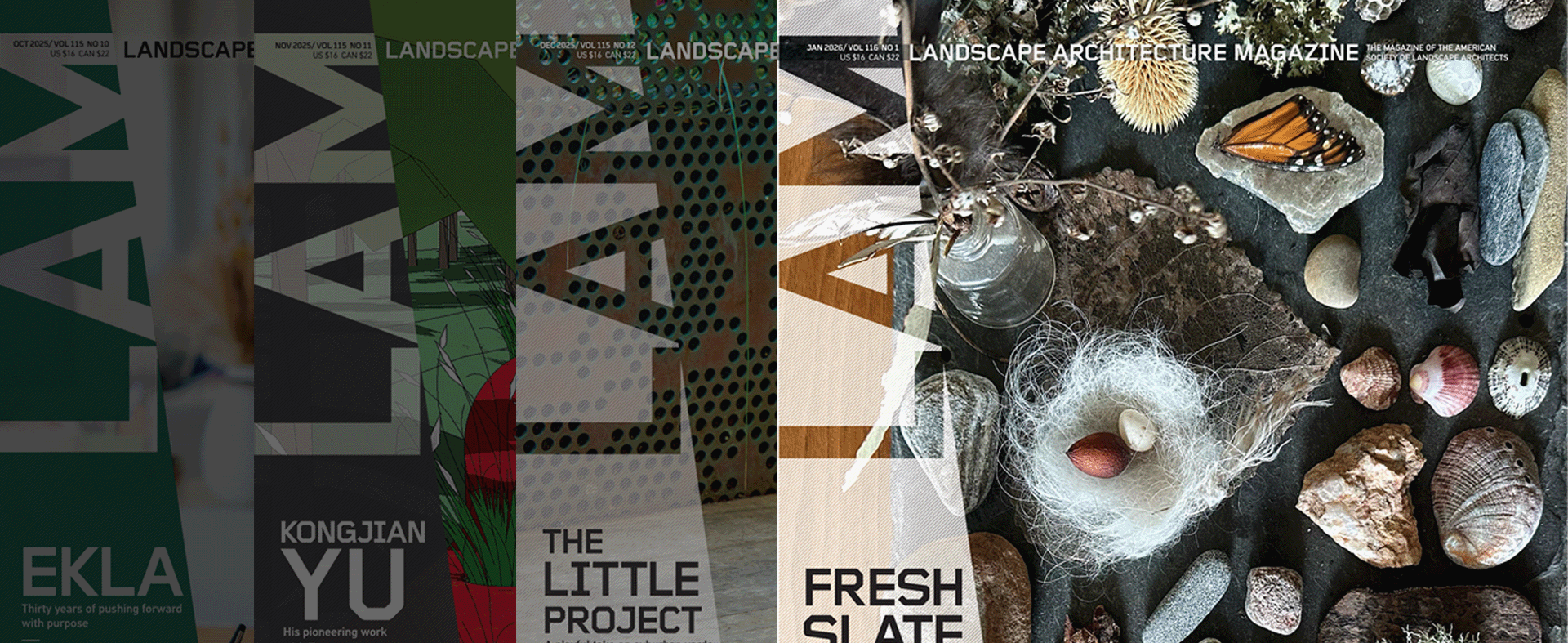

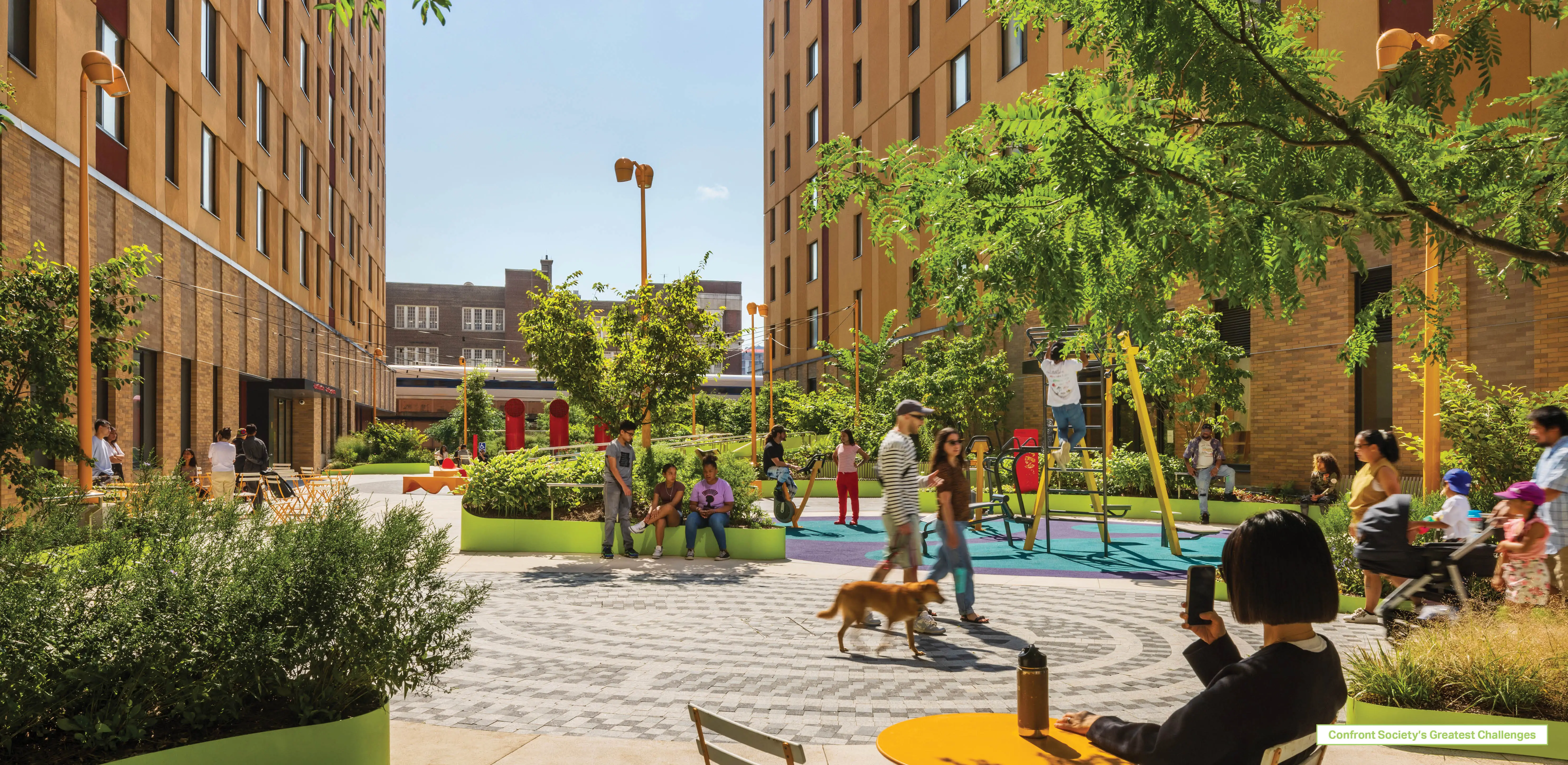
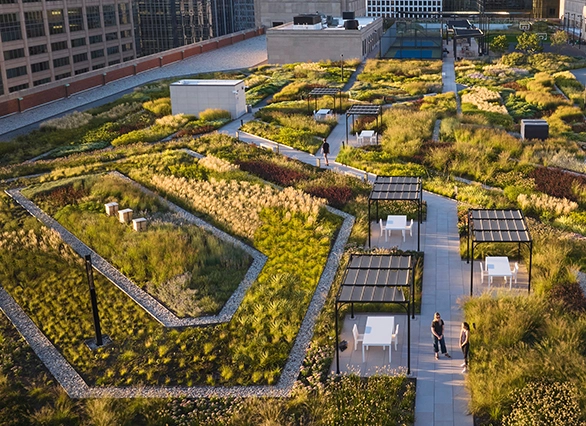
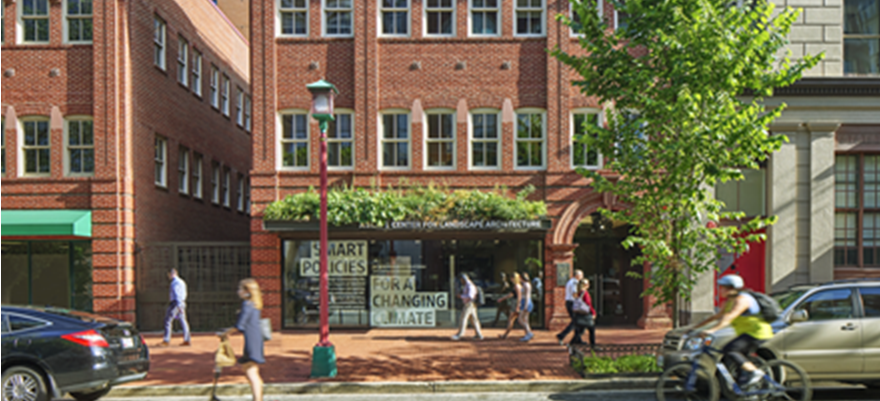
_GalleryFullImage.webp?language=en-US)
